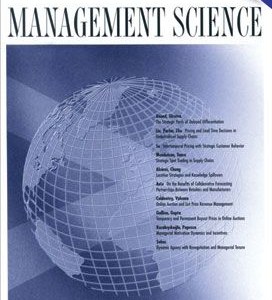
He, S., Offerman, T. and van de Ven, J. (2017). The Sources of the Communication Gap Management Science, 63(9):2832--2846.
-
Affiliated authors
-
Publication year2017
-
JournalManagement Science
Face-to-face communication drastically increases cooperation rates in social dilemmas. We test which factors are the most important drivers of this communication gap. We distinguish three main categories. First, communication may decrease social distance. Second, communication may enable subjects to assess their opponent{\textquoteright}s cooperativeness (“type detection”) and condition their own action on that information. Third, communication allows subjects to make promises, which create commitment for subjects who do not want to break a promise. We find that communication increases cooperation very substantially. In our experiment, we find that commitment value is an important factor, but the largest part of the increase can be attributed to type detection. We do not find evidence that social distance plays a role.